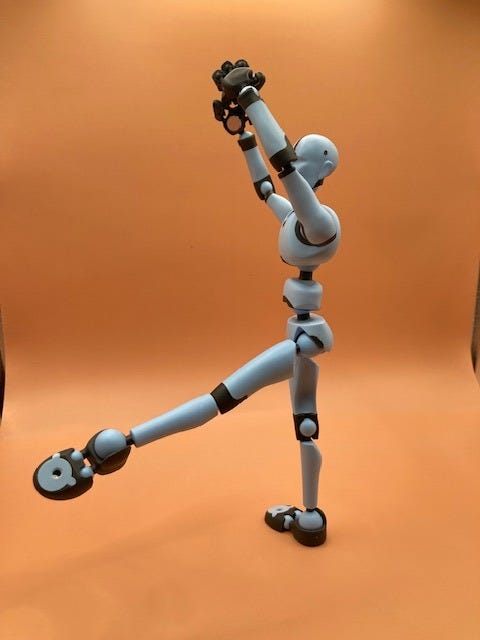French For Dancers: Battement en Cloche
French For Dancers
Demystifying dance terminology and steps for dancers and dance-lovers!
Issue 18: Battement En Cloche
Bonjour! Welcome to French For Dancers
Can you hear the bells?
Parlez-Vous Ballet?
(Do you speak Ballet?)
BATTEMENT EN CLOCHE
(bat-tuh-mon on closh)
Battement: a beating, or movement of the leg
En: In + Cloche: Bell = En Cloche: bell-shaped
Battement en Cloche means a movement like a bell, or in the shape of a bell. In this step, the leg swings forward and backward without traveling, like a bell.
It can also be referred to by the abbreviated Battement Cloche (which is how I usually say it) or called Balançoire (which means a swing – as in a playground swing), or Passer La Jambe (pass the leg). Balançoire often incorporates a higher leg, with a coordinating upper body movement (see Teacher Tip below).
In this step, often introduced in the barre exercises, the working leg swings forward (devant) and backward (derrière), passing through 1st position each time. This step can be done low in tendu or dégagé, or high like a grand battement (big movement). In all versions, the swing must be even in height and in dynamics in both the forward and backward movement.
More advanced dancers may be given battement cloche in attitude, still moving through 1st, but bringing the lifted legs into the attitude positions we looked at last week.

Savoir-Faire
(Know-How)
Student Tip:
Battement en cloche helps build up strength and stability for balancing. It is also a great warm up for hips, legs, and feet.
It is important to keep the standing leg straight during battement en cloche, to provide support for the working leg as it brushes through 1st position and lifts to whichever height is called for. As the foot moves through 1st, make sure that your weight is distributed over both feet (with relaxed, lengthened toes) and not leaning on the standing leg.
Make sure that your leg swings directly forward and backward, and not on an open diagonal. Bells don’t usually swing in a circular motion!
Stylistically, it is also important that the leg reaches the same height both in front and back, so that the “bell” pattern is shown, with an even arc. The moving leg also pauses for a split second when it arrives at its desired position; the dynamics of the movement should show a contrast between the swing and the final position, even if it’s just for a moment.
Once you feel stable doing battements en cloche at the barre, you can perform them in the center part of class. They can be incorporated into adagio, petit allegro, or grant allegro combinations.
Teacher Tip:
The term Balançoire is often associated with a higher grand battement of the leg, and the coordinated tilting of the upper body. Here, the upper body and the leg counterbalance one another, so it is important that students not over-tilt and lose the connection between the core (especially the back and shoulders) and the legs. As the leg moves forward, there is a slight back tilt or épaulement (movement of the shoulder). The back returns to vertical as the leg passes through 1st position, then tilts slightly forward as the leg moves to the back.
This is neither a full cambré (back bend) nor a penché (lean) forward, but a slight movement that elongates the visual line of the leg’s swing.
Students should be careful to keep their hips and shoulders square to the front and not twist as they take their tilt, so they stay right over their center balance vertical axis.
À La Carte
(From the Menu)
Recommendations, reflections, and/or useful links
I’m a sucker for a good backstage tour. It satisfies my inner dance & theater nerd, and I love learning about the lore and particulars of different venues. It’s also fun to stand where so many greats have stood (and danced) over time. Every now and then, I come across one of the backstage videos made by the glorious Freyja of the Royal Opera House in London – she’s a tour guide there, and I must make it a point to take her tour next time I find myself across the pond.
Here she is extolling the virtues of the Tutu Tree - enjoy!
Merci!
(Thank you!)
Thank you for reading this newsletter! If you have friends who might enjoy this, please share the link with them!
- Peggy








